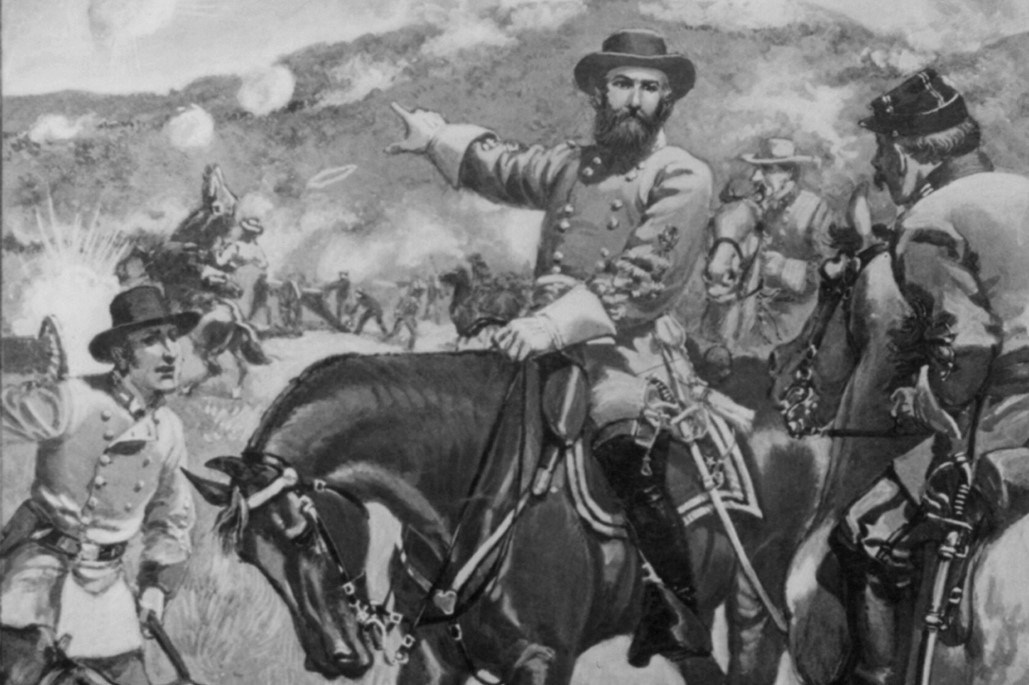Last updated: January 31, 2020
Article
Was James Longstreet the “Best Man” at Ulysses and Julia Grant’s Wedding?

Library of Congress
First off, the term “best man” happens to be centuries old. According to the popular website Mental Floss, “the original duty of a ‘best man’ was to serve as armed backup for the groom in case he had to resort to kidnapping his intended bride away from disapproving parents.” The best man tradition has clearly evolved into a less violent one, but the term nonetheless has endured. Several recent biographies of Grant have embraced the claim that Longstreet was Grant’s best man, but unfortunately they don’t pinpoint an exact source to verify whether this claim is true.
It is undisputable that General Longstreet and General Grant had close early ties as young officers in the US army. They were enrolled at West Point three years together, with Longstreet graduating in 1842 and Grant in 1843. Both served at Jefferson Barracks with the 4th U.S. Infantry near St. Louis after graduation, and they both served together in the Mexican-American War. Longstreet was also distantly related to Julia as his mother’s maiden name was Dent. However, Longstreet’s exact role in Ulysses and Julia’s wedding is shrouded in mystery.
The first recorded claim of Longstreet as Grant’s best man dates back to a 1905 book entitled Recollections of a Confederate Staff Officer, written posthumously by Gilbert Moxley Sorrel, a Brigadier General who was on Longstreet’s staff for most of the Civil War. In his book, Sorrel states that he first met Longstreet in July 1861 right before the First battle of Manassas. Writing a brief biographical sketch of Longstreet, Sorrel writes, “at West Point, he [Longstreet] was fast friends with Grant and was the best man at the latter’s marriage.” The book was published sixty-seven years after the wedding and Sorrel did not actually attend the event. Since Longstreet, Ulysses, and Julia had all passed by 1905, nobody could confirm the claim. Furthermore, none of the biographies about Grant published during his lifetime mention Longstreet as his best man (or that anyone else served in that role).
A check of the primary sources contradicts what Sorrel claims. In his memoirs, General Grant mentions his being married to Julia on August 22, 1848, but says nothing more about his wedding. In her own memoirs, Julia elaborated further but did not mention that a best man was present. She mentioned that three groomsmen accompanied Grant that day: Lieutenant Cadmus Wilcox, Bernard Pratte of St. Louis, and Lieutenant Sid Smith (Julia was in error about Smith, who died in the Mexican-American War prior to the wedding). She never mentions Longstreet in her description of the wedding. Due to his future fame during the Civil War, Julia would have been hard pressed not to remember his role in the wedding. Julia’s sister, Emma Dent Casey, was also present at the wedding. In her memoir, “When Grant went A-Courtin’ (1908)” Emma recalled that “Captain’s [Grant’s] groomsmen were all army officers but, lest I be inaccurate, I will not attempt to mention them by name.” Although she mentions Longstreet being a frequent visitor to her family home White Haven, she does not mention him when referring to the wedding. Finally, Longstreet gave his own account in a New York Times article dated July 24, 1885 (right after General Grant’s death) where he stated, “in 1848 after the usual uncertainties of a soldier’s courtship, Grant returned and claimed Miss Dent [Julia] as a bride. I had been married just six months at that time, and my wife and I were among the guests at the wedding.”
The exact details of General Longstreet’s involvement in General Grant’s wedding may never be known. The story, true or not makes clear a larger issue: the devastating American Civil War divided not only fellow citizens from one another but also friends such as Longstreet and Grant, who were forced to put aside their past comradery to fight against each other. Perhaps Longstreet said it best in his New York Times account of his friendship with Grant, “Why do men fight who were born to be brothers?”
